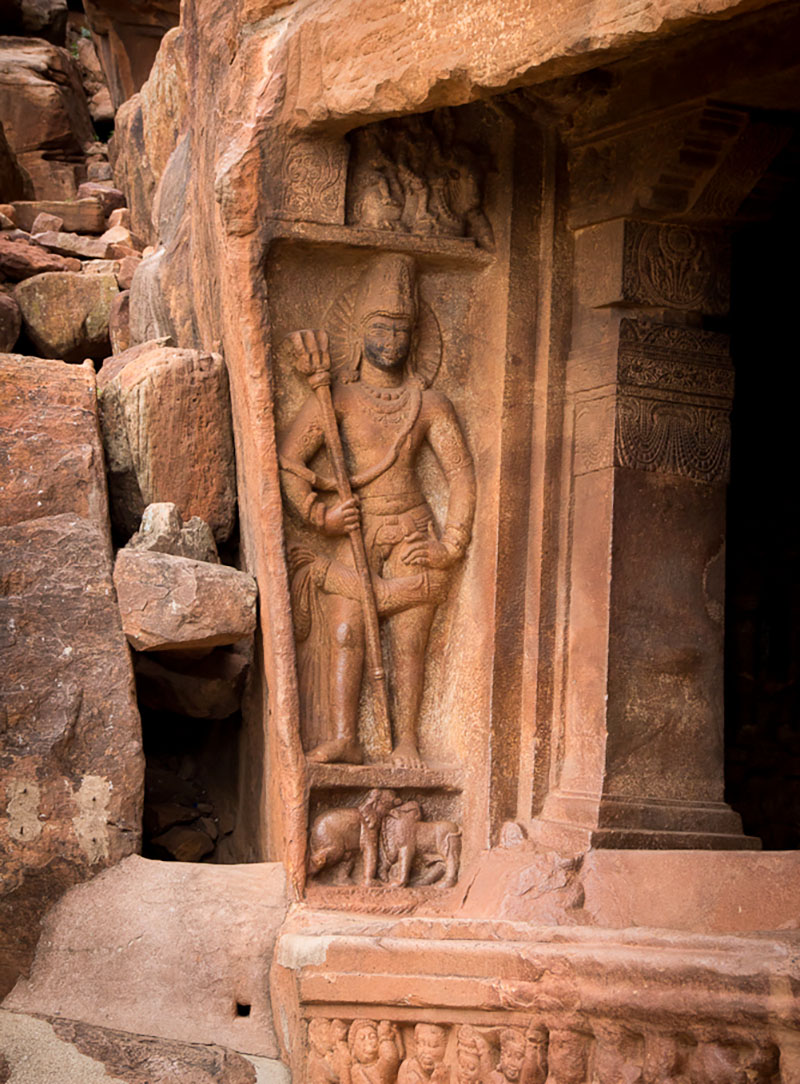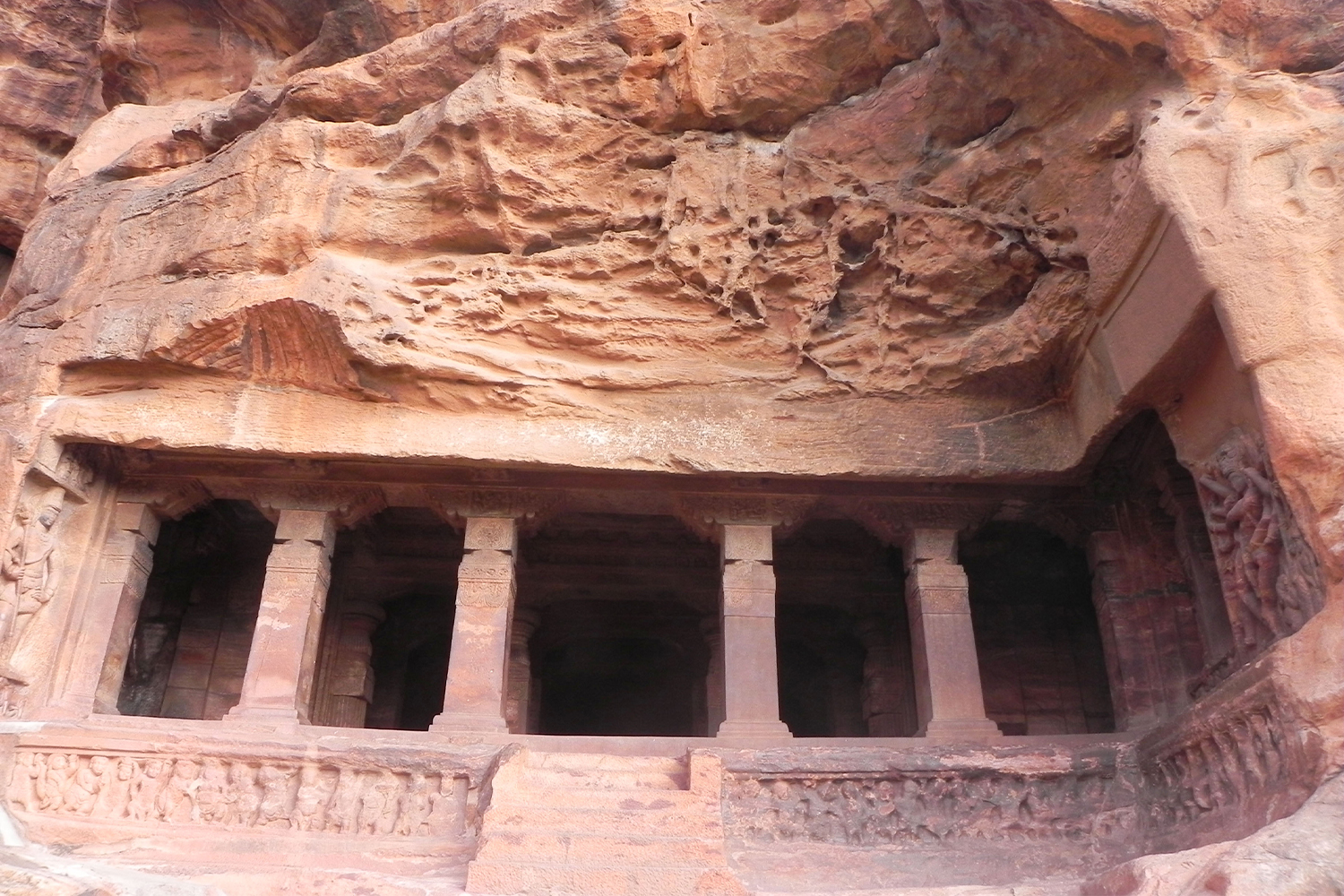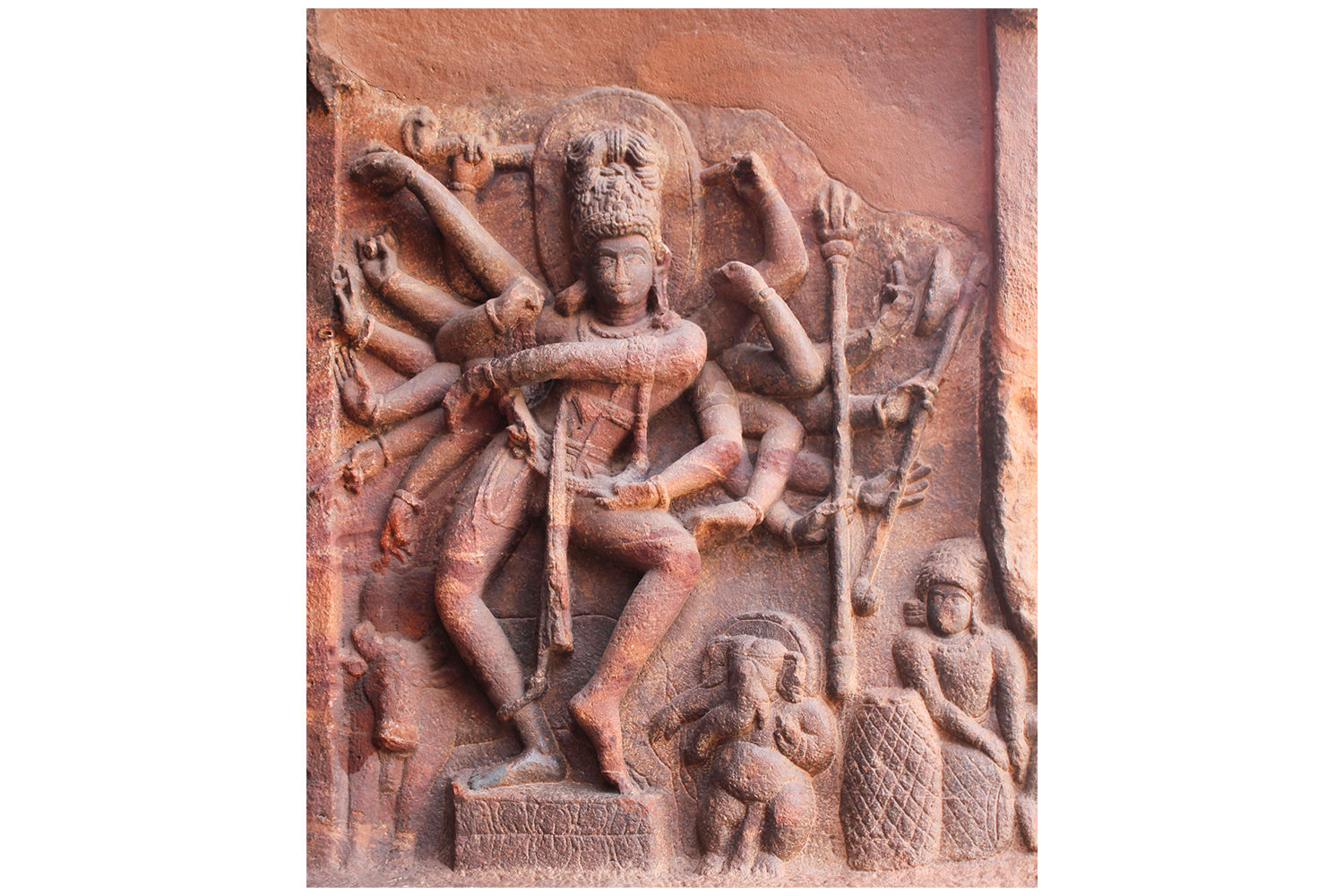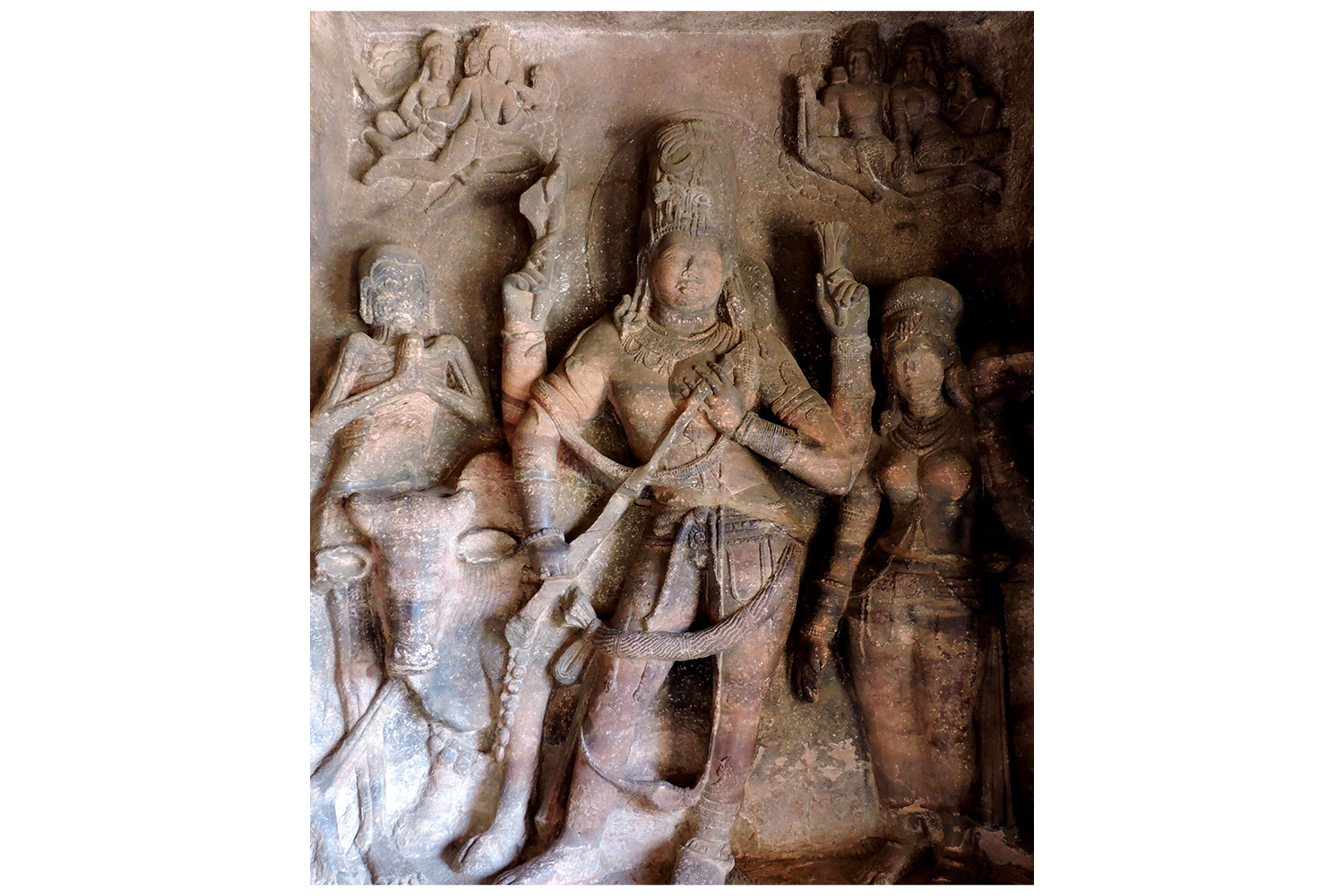Dated to the last quarter of the sixth century CE, Badami Cave 1 is considered among the earliest surviving examples of an early medieval Deccan Shiva shrine with its lingam intact. It is situated at the lowest elevation among the Badami cave temple group, and its architectural and sculptural forms and content suggest that it was the first among them to be excavated. Like the other cave temples at the site, the basic architectural plan of Cave 1 is reminiscent of the chaitya and vihara schemes used in earlier northern Deccan rock-cut caves: it consists of a pillared verandah or mukhamandapa, a pillared hall or sabhamandapa, and an inner sanctum or garbhagriha excavated into the rear wall.
The basement frieze of the porch sill depicts bhutaganas in different moods and extends in an L-shape into a west wing housing a subsidiary shrine. The ganas form an additional band for this subsidiary shrine and populate the dados of the sculptural panels within. Above the frieze, on the jutting flank of the temple, is a large sculptural panel of an eighteen-armed Shiva, identified by some scholars as Nataraja. The god is accompanied by diminutive figures of Nandi, Ganesha and a figure playing the drums. The single-bayed unit with the subsidiary shrine contains a sculpture of Mahishasuramardini accompanied by Kartikeya on its south wall; on its north wall is a relief of Ganesha. The pillars of this bay are mostly plain but for the mouldings, suggesting that this wing may have been a later addition.
On the eastern flank of Cave 1, perpendicular to the pillared front, is a large image of a dvarapala (or sentry) holding a trident. In a smaller panel below is the relief of the bull-elephant composite vrishabha-kunjara; above the guardian figure is another panel depicting Shiva and Parvati seated on Nandi.
Punctuating the screen wall of the mukhamandapa are four pillars and terminal pilasters, the central two of which have round fluted shafts interrupted in the middle by a cuboidal projection and topped with a cushion capital . The terminal walls of the inner verandah bear panels of Harihara, the Shiva-Vishnu composite on the east, and the androgynous Ardhanarishvara with the sage Bhringa on the west. Carved onto the central ceiling slab, facing the sanctum, is a decorative Nagaraja figure offset within a quadrangular frame.
The mukhamandapa is divided into five bays running towards the back wall and garbhagriha, and three bays running across. It features four rows of square-sectioned pillars and two engaged-corner or cantoned pillars. Like the preceding verandah, it has lintels, crosswise figure-brackets, ceiling slabs and, additionally, vyalamukha corbels. The pillars have their own floor sills to delineate the transverse bays. On the floor in the middle bay, in line with the sanctum, is a lotus medallion above which, on the ceiling, is another slightly pendentive lotus medallion.










